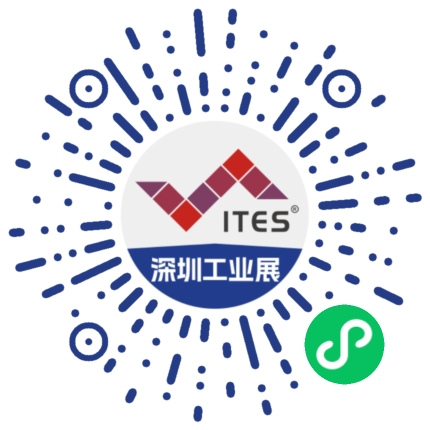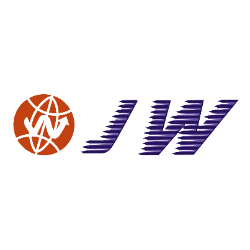
Company Introduce
Shenzhen Jingwen Automation Equipment Co., Ltd. was established in 2003. We are committed to the R & D and production of pneumatic components. With professional team, advanced technology and innovative ideas, we provide customers with high-quality solenoid valves, mechanical valves, manual valves, vacuum generators, vacuum suction cups, air pressure sensors, flow sensors, cylinders, air source processor products. The company has more than 120 employees, with more than 10 engineers specializing in automation design, R & D and production plant area of 7500 square meters. Over the years, we have always insisted on quality as the fundamental and customer demand as the guide. JW products are widely used in semiconductor, 3 electronics, PCB, machine tools, manipulators, lithium batteries, automobiles, warehousing and logistics industries, and have been highly recognized and praised by customers. At the same time, we have actively expanded the market and established long-term and stable cooperative relations with the upstream and downstream industries to jointly promote the development of the industry. In the future, the company will continue to adhere to the business philosophy of "excellence, stability and efficiency", constantly explore and innovate, strive to enhance its own strength, and strive to become a leading enterprise in the pneumatic components industry.
Exhibit brands
Exhibits
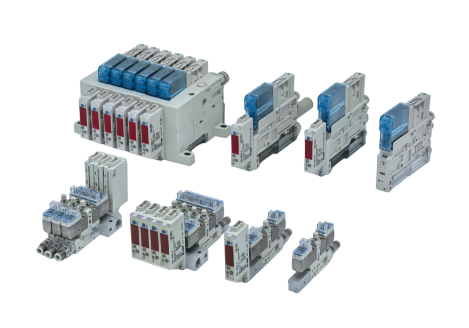
Integrated vacuum generator
A vacuum generator is a device that uses a positive pressure air source to produce negative pressure. Its working principle is to form high-speed airflow through the flow of compressed air, which produces entrainment at the nozzle, thus taking away the surrounding air and forming a certain degree of vacuum. Just like being next to a fast-moving stream of water creates suction. In terms of structure, it mainly includes air inlet, nozzle, diffusion cavity and so on. The air inlet is connected with compressed air, the spray pipe is used for generating high-speed airflow, and the diffusion cavity can enhance the negative pressure. Vacuum generator is widely used in industrial automation and other fields. For example, in packaging machinery, it is used to adsorb and carry thin and light objects, such as plastic film, paper, etc. In the production of electronic equipment, it is used to pick up tiny electronic components.
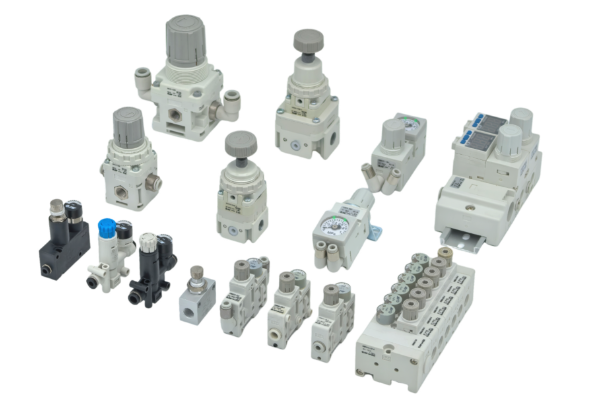
Precision pressure reducing valve
The principle of precision pressure reducing valve is mainly to control the opening of the opening and closing parts, adjust the medium flow to achieve pressure reduction, and rely on the feedback of the pressure behind the valve to maintain the stability of the outlet pressure. Spring diaphragm structure function: Take the common spring diaphragm type as an example, the medium enters the pressure reducing valve from the inlet. When the inlet pressure rises, the diaphragm is pushed to deform downward, and the valve core connected with the diaphragm moves downward, so that the opening of the valve port is reduced, the throttling effect is enhanced, and the pressure loss when the medium passes through the valve port is increased, thereby reducing the outlet pressure. When the inlet pressure decreases, the diaphragm moves upward under the action of the spring force, the valve core moves upward, the opening of the valve port increases, the throttling effect is weakened, and the outlet pressure is relatively stable. Pressure balance adjustment: the target value of outlet pressure can be set by adjusting the pre-tightening force of the spring. The spring exerts an upward force on the diaphragm that balances the downward force generated by the inlet pressure through the diaphragm. When the outlet pressure deviates from the set value, the deformation of the diaphragm will change the opening of the valve port and make the outlet pressure return to the set range. Pressure balance adjustment: the target value of outlet pressure can be set by adjusting the pre-tightening force of the spring. The spring exerts an upward force on the diaphragm that balances the downward force generated by the inlet pressure through the diaphragm. When the outlet pressure deviates from the set value, the deformation of the diaphragm will change the opening of the valve port and make the outlet pressure return to the set range.
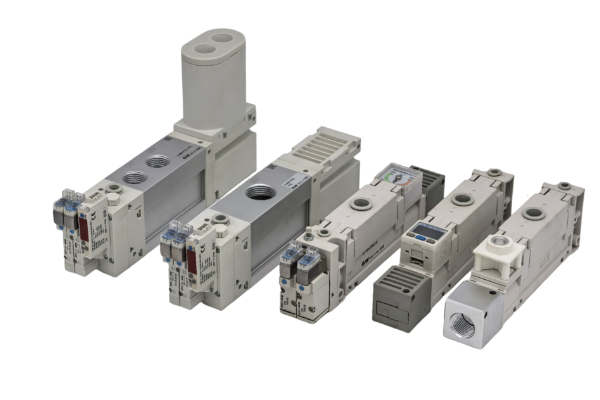
Multistage vacuum generator
Multi-stage vacuum generator is a new type of vacuum device which uses positive pressure to produce negative pressure. The following is an introduction about it: How it works The multi-stage vacuum generator is based on the Venturi effect and the principle of fluid mechanics, and mainly works in the following ways: Multi-level nozzle structure: multiple levels of nozzles are provided. After the compressed air enters, it first passes through the first-stage nozzle and is ejected at a high speed. During the ejection process, according to the Bernoulli principle, the increase of air flow rate will lead to a decrease in pressure, thus forming a local low-pressure area near the nozzle outlet, generating a certain suction effect and entraining the surrounding air. Subsequently, the airflow generated by the first-stage nozzle and the entrained air enter the next-stage nozzle together, and the next-stage nozzle further accelerates and depressurizes the airflow to enhance the suction effect again, so that the suction capacity is continuously amplified through the action of the multi-stage nozzle, and finally a larger vacuum suction amount and a higher vacuum degree are formed at the outlet. Cascaded compressed air supply: compressed air is supplied in a cascade, connecting multiple Venturi stages in series. In each stage, the energy of the compressed air is gradually utilized, and the negative pressure and the air flow generated by the previous stage provide power and a basis for the next stage, so that each stage can further improve the vacuum degree and the air exhaust rate on the basis of the previous stage; and through the cascade effect, the multi-stage vacuum generator can more effectively utilize the energy of the compressed air, A greater amount of vacuum extraction is produced with less consumption of compressed air. Intermediate valve control: In a multi-stage configuration, an intermediate valve is usually provided. The valves can quarantine each stage step by step as required, and the airflow passage and pressure distribution of each stage can be adjusted by controlling the opening and closing States of the valves, thereby accurately controlling the formation and adjustment of the vacuum degree. Under the low vacuum level, the nozzles at all levels can work together by reasonably controlling the middle valve to produce important suction flow in a centralized manner, so as to meet the requirements of vacuum degree and suction rate under different working conditions. Characteristic Energy saving and high efficiency: it can produce a large amount of vacuum pumping with less compressed air consumption, which can save a lot of compressed air compared with single-stage vacuum generator. High vacuum degree and large pumping volume: It can achieve a higher vacuum degree and provide a larger pumping flow, which can quickly establish the required vacuum environment. Compact structure: compact design, small size, light weight, easy installation, can adapt to a variety of working environments with limited space. Clean and environmentally friendly: no need to use lubricating oil and other auxiliary materials, no pollution in the working process, in line with environmental requirements. Easy maintenance: no transmission parts, reduced wear and failure points, no need for additional lubrication and complex maintenance, low maintenance costs. Application scenario Automatic production line: It is used for adsorption, handling, assembly and other operations of parts on the automatic production line of electronics, automotive and other industries. Packaging industry: In the packaging process of food, medicine, daily necessities, etc., it is used to extract the air in the packaging bag, realize vacuum packaging, and ensure the preservation quality and sealing of products. Robot field: As a part of the robot end effector, it provides vacuum adsorption force for the robot, so that it can grasp and carry workpieces of various shapes and materials. Printing industry: In printing equipment, it is used for paper conveying, positioning and adsorption to ensure the accuracy and stability of the printing process. Medical equipment: in the process of medical equipment manufacturing, diagnosis and treatment, it is used for vacuum adsorption, vacuum sterilization, assembly of medical equipment and other operations.
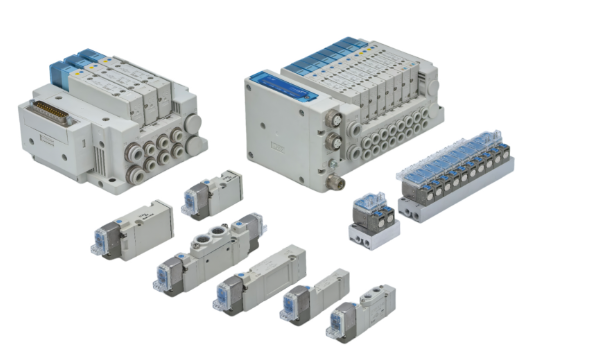
Valve Island
The valve terminal is usually composed of communication module, pneumatic module and various interfaces. Its principle is mainly embodied in the following aspects: Principle of signal input and transmission Multi-pin interface mode: the output control signal and input signal of the programmable controller are connected with the valve terminal through a multi-strand cable with a multi-pin plug, and the output signal of the sensor is also connected to the electric signal input port of the valve terminal through the cable. All electrical signal processing and protection functions, such as polarity protection, photoelectric quarantine, waterproof, etc., are realized on the valve terminal, and the system no longer needs a junction box. Fieldbus mode: The fieldbus realizes the bidirectional transmission of signals in the control system in the form of electrical signal transmission according to a certain data format. Only one cable with two or four strands is needed to connect two objects and transmit them in the form of potential difference. In the valve terminal system with field bus, each valve terminal has a bus input port and a bus output port, and a plurality of valve terminals or other devices with field bus can be connected in series, and can be connected with various types of programmable controllers directly or through a bus converter. Control and processing principle Sensor detection: The sensor in the valve terminal is responsible for detecting the pressure, temperature, flow and other parameters of the medium, and converting these physical quantities into electrical signals to provide data basis for subsequent control. Controller operation: The controller built in the valve terminal receives the electric signal from the sensor, and uses PID control, logic control, fuzzy control and other algorithms to process and operate, and determines the operation instructions to be executed on the valve according to the preset target and the actual detection value. Pneumatic execution principle Air supply: external compressed air enters the pneumatic module of the valve terminal to provide power for the pneumatic actuator. Valve control: The instructions sent by the controller are transmitted to the pneumatic actuator, usually by controlling the opening and closing state of the solenoid valve to switch the pneumatic circuit, and then control the pneumatic actuator, such as the expansion and contraction of the cylinder, rotation and other actions, and finally realize the control of the flow, pressure, on-off of the fluid medium. Principles of Communication and Interaction Communication with the upper computer: The valve terminal can exchange information with the upper computer or the monitoring system through the communication module, upload its own working status and parameter information to the upper computer by using communication protocols such as industrial Ethernet, Profibus and DeviceNet, and receive the control instructions and parameter settings issued by the upper computer. Linkage between equipment: In the complex industrial automation system, the valve terminal can communicate and link with other equipment with communication function, such as sensors, actuators, other control units, etc., and realize the automation and intelligent control of the whole production process through mutual information transmission and cooperation.
Main products
Vacuum generator valve terminal solenoid valve pneumatic component

